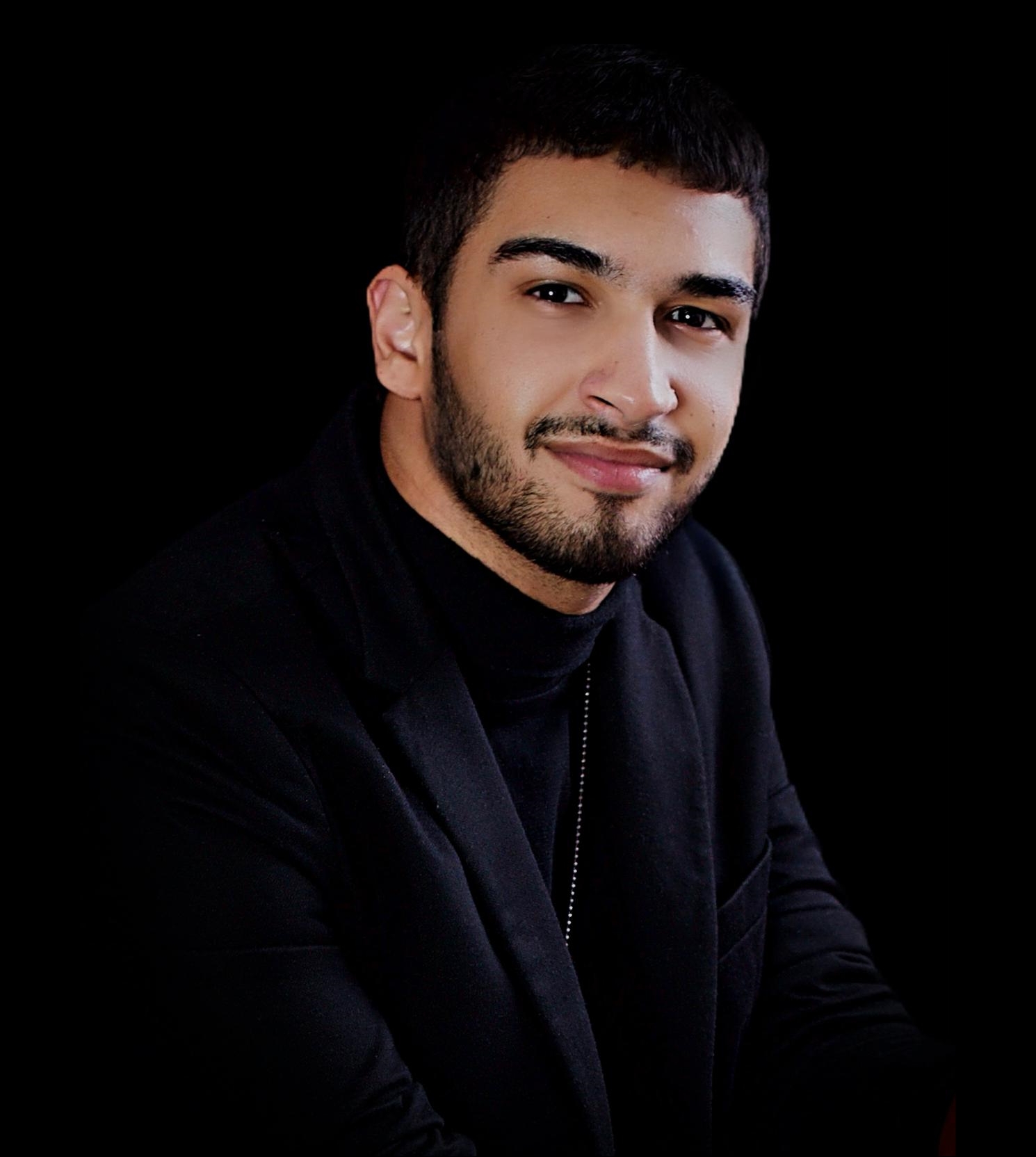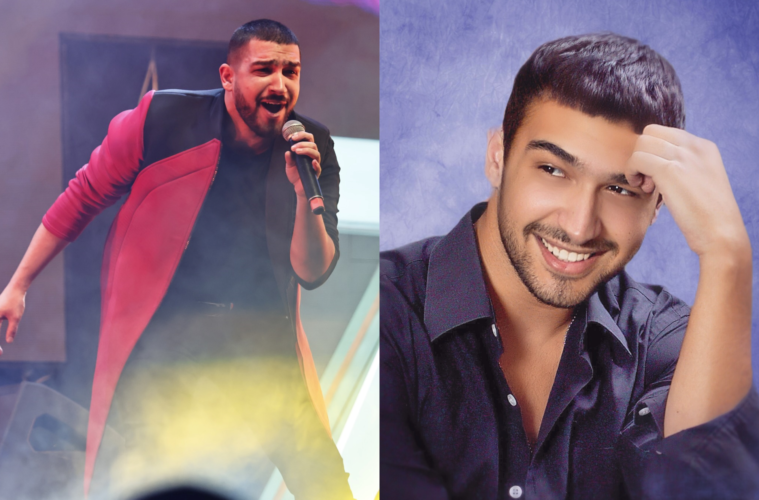We spoke with Claudiu Dumitrache, the Romanian artist who received encouragement from Miley Cyrus in his musical career. A singer, poet, writer, journalist, and cultural promoter, Dumitrache, at just 25 years old, is currently the youngest writer in his country and one of its most respected cultural figures. He shared his thoughts with us on the essence of music and art, which he views not merely as forms of entertainment but as profound expressions of humanity and the search for meaning. In his perspective, music is a responsibility, a bridge between souls, and a language of harmony and unity.
Designated as the European Artist of the Month in Beverly Hills last August, Dumitrache critiques the direction of contemporary art, which, in his opinion, has often abandoned its spiritual dimension in favor of commercial success and fleeting experimentation. He argues that modern psychology’s influence on art has reduced it to a mere outlet for emotional release, stripping it of its higher purpose. In literature and music, this trend is evident in an increasing superficiality, where success is driven by marketability rather than genuine artistic value.
He is an award-winning singer, known in Hollywood as a Revelation from Wallachia. Admired by celebrities, business leaders, and members of the Grammy Awards committee, he holds titles such as Cultural Ambassador of the Euro Education Federation, Honorary Citizen in his hometown, and Peace Ambassador in India. In 2020, he set a national record as The youngest author of an autobiography, officially recognized by the Romanian Book of Records. Two years later, in 2022, he became the youngest recipient of the Union of Professional Journalists of Romania Awards.
In music, Dumitrache received the highest number of votes in the Battle of the Voices competition in 2016, winning the Special Music Awards TV Prize in Bucharest. With over 3,000 live performances, he has shared the stage with the legendary band Alphaville, Australian singer Faydee, and artist Neda Ukraden.
Our conversation with Dumitrache underscores that true culture is not just about accumulating information but about cultivating a curious and conscious spirit. Romania’s youngest cultural icon, praised by EB Davis, Jonathan Jackson, Michael James Down, and Kaven Girouard (Celine Dion’s guitarist), speaks about the role of the artist as a mediator between generations, the role of music as an expression of collective identity, and art’s need to aspire to something greater than itself.
In a world facing a crisis of meaning, Claudiu Dumitrache reminds us that the artist’s mission is to carry forward humanity’s “ancestral prayer.”

Image Credits: Myosotis Media Group
Claudiu, in a world where music is often seen merely as entertainment, you speak of it as something much deeper. What does music mean to you?
Music is not just sound; it is the architecture of emotions, the purest language of the soul. It exists beyond words, beyond the limits of human expression. It unites what is broken and heals wounds that words cannot reach. For me, music is not a career or mere performance; it is a responsibility—a duty to translate what cannot be seen, to give form to the inexpressible.
This is what art should be for us. Some of the greatest artists of the 20th century to the present, I believe, are Sophrony of Essex, Andrei Tarkovsky, Arvo Pärt, and Ezio Bosso. Through their art, they have rediscovered and reaffirmed the true nature of humanity and our ultimate purpose—our eschatological dimension. This is the true calling of an artist: to continue the ancestral prayer.
As prophesied in Apollo’s oracles, with an unceasing melody, the century must blend with the centuries. The true reason why a person receives the grace of talent from God is explained in the First Epistle to the Corinthians, Chapter 14.
How do you see contemporary art, particularly in the context of universal culture? What is the state of art today?
Contemporary art, both in Romania and globally, has largely abandoned its traditional role of elevating the human experience. Instead of seeking beauty, depth, and meaning, it often focuses on shock value, commercial appeal, and fleeting experimental trends. In many cases, art is no longer an act of creation but rather a form of psychological release—a mere catharsis. This shift has been encouraged by theories that reduce human expression to instinctual impulses, failing to recognize its spiritual and intellectual dimensions. One author who explains this phenomenon is Savatie Bastovoi, who has written about the Freudian influences in contemporary art.
Art has always had the power to inspire, to reveal something greater than ourselves. When art becomes merely a means of personal catharsis or an instrument of ideological propaganda, it loses its higher purpose. The modern artist often rejects tradition in the name of hypothetical originality but ends up conforming to another form of uniformity—one dictated by trends, commercial success, and cultural pressures.
A true artist should seek something beyond mere self-expression; they should create something enduring—something that speaks to the human soul. Art should not just trigger chemical reactions but should transcend human nature.
Would you say that this change is a result of modern psychology’s influence on art?
Absolutely. Sigmund Freud’s theories have profoundly influenced the way art is created and interpreted. The Freudian idea that art is a form of psychological release, a means for the artist to express repressed emotions, has fostered a culture where shock, provocation, and even vulgarity are seen as markers of authenticity.
This shift has distanced art from craftsmanship and aesthetics, steering it toward raw, sometimes chaotic expressions of inner struggle, complexes, and discontent. While psychology certainly has its role, reducing art to a mere outlet for emotional discharge limits its true significance and noble purpose.
How does this perspective affect literature, particularly in Romania?
In literature, the influence of this approach is just as apparent. Many contemporary writers focus on themes like existential void, nihilism, and personal trauma. While these subjects aren’t without artistic value, they are often treated superficially, lacking the complexity and depth found in classical works. One might even say that many contemporary works are written without serious intellectual engagement or thoughtful research.
Today, success is often driven more by marketability than literary merit. Books with sensational titles or provocative themes gain visibility, while more refined and well-crafted works struggle to find an audience. Romanian literature, much like Western literature, is being reshaped by these unorthodox trends, sometimes at the expense of its rich heritage.
If we were to turn our attention to authors like Seraphim Rose—one of the great figures from California who created an essential body of work for understanding human history and evolution—our critical approach and artistic consumption would be radically different. Because when you have a broader vision of the world, you no longer have time for “philosophical gambling.” Philosophy is important to us, but it cannot compare to the Philokalia, and it cannot offer the certainty that the latter does.

Image Credits: Myosotis Media Group
You’ve spoken about the idea that unity and individuality are not in conflict. How does music reflect this philosophy?
A single note is beautiful on its own, but its true power emerges when it joins others in harmony. In an orchestra, there is no opposition between the violin and the cello; they coexist, respond to one another, and create something greater than themselves.
This is the essence of human society, as exemplified by Ezio Bosso. Individuality is the melody, unity is the harmony, and together they form the symphony of existence. If we understood this in our lives as musicians understand it in their music, the world would be a better, wiser, and more compassionate place.
What is the connection between music, art, philosophy, and education?
They are all expressions of the same pursuit—the search for meaning, for understanding. A book, a piece of music, a philosophical idea: all are bridges between minds, hearts, and generations. Education, in its purest form, should not be about memorizing facts but about cultivating curiosity—teaching people to listen—to one another, to history, and to the whispers of art.
We should not educate children to become efficient workers, but to become responsible thinkers, free individuals, dreamers, and creators.
Many artists speak of creation as a personal process, yet you say that music belongs to everyone. Can you elaborate?
No melody belongs solely to the composer, just as no poem belongs solely to the poet. The moment a piece of music is played, it is no longer just mine—it becomes yours, theirs, ours. Music is an act of sharing, a dialogue between souls. I have often felt that I am merely a vessel through which music flows, not necessarily its source. And that is the greatest privilege—to be part of something greater, something that does not submit to biological automatism.
You are known for your dedication to cultural diplomacy and your efforts to bring together different traditions. What role does art play in uniting cultures?
Art achieves what politics often fails to do. When a melody moves you, it doesn’t ask for your nationality, beliefs, or history. It speaks directly to your soul. I’ve traveled to places where I didn’t know the language, yet we understood each other perfectly through music. That’s why art isn’t just important—it’s essential. It teaches us that, before anything else, we are human, and that’s the only identity that truly matters.
Some argue that art is and should be completely free. What are your thoughts on artistic freedom?
Art is never completely free, nor should it be. True artistic expression comes with responsibility—to culture, to history, and to the audience. If freedom means abandoning all structure and meaning, we risk reducing art to mere chaos.
The greatest artists in history worked within traditions, honed their craft through discipline, and, at the same time, brought innovation and personal vision. The challenge today is to restore this balance—creating art that is both profound and masterfully crafted.

Image Credits: Myosotis Media Group
How do you see the future of art?
The future of art depends on our ability to move beyond the limitations imposed by a culture obsessed with challenge and self-indulgence. If we continue down this path, art will become increasingly fragmented and devoid of substance. However, if a new generation of artists can look past immediate trends and rediscover the values that have made art timeless—beauty, truth, and depth—then we may witness an artistic renaissance.
Art must aspire to something greater than itself; only then can it truly endure. What satisfaction can artists derive if their work brings “nothing new under the sun,” if the artistic act lacks profound, revealed values?
Published by HOLR Magazine.


